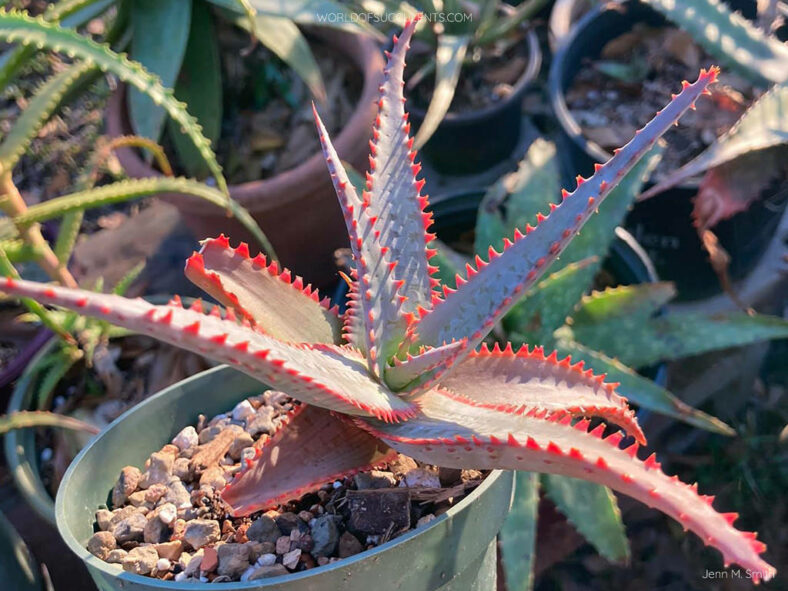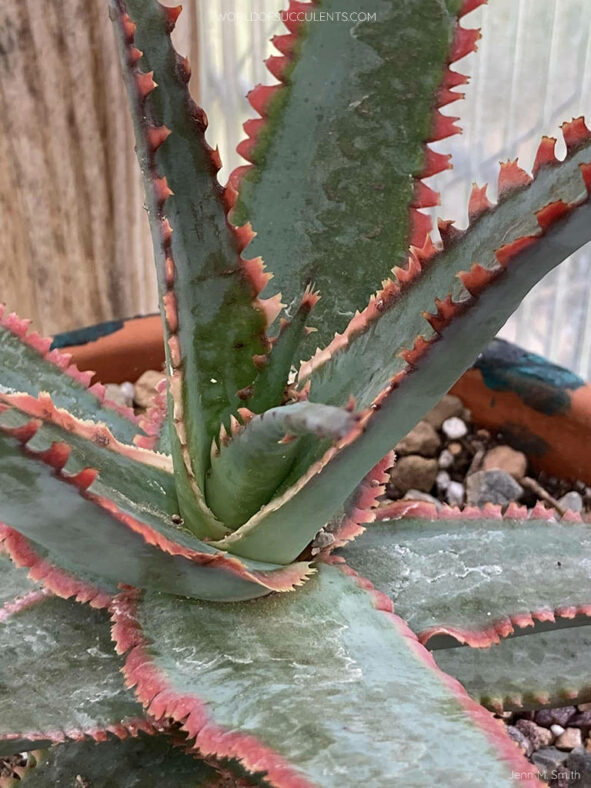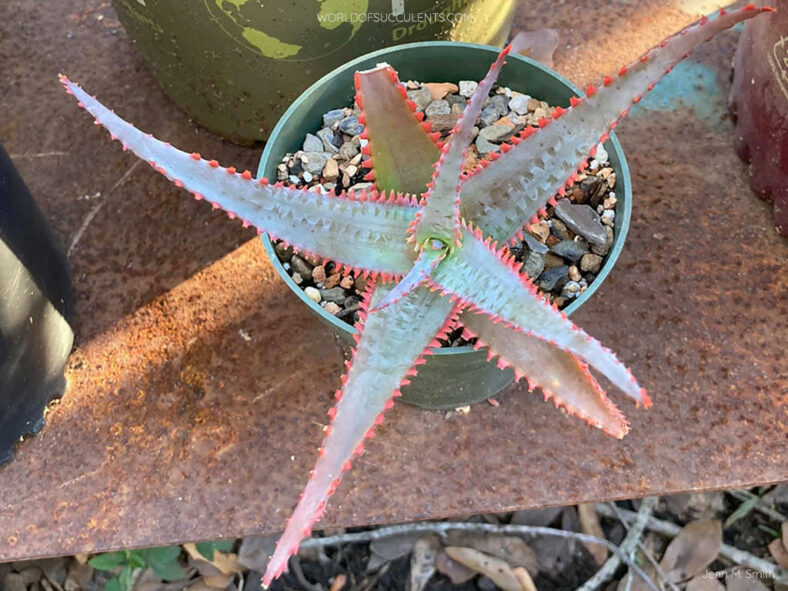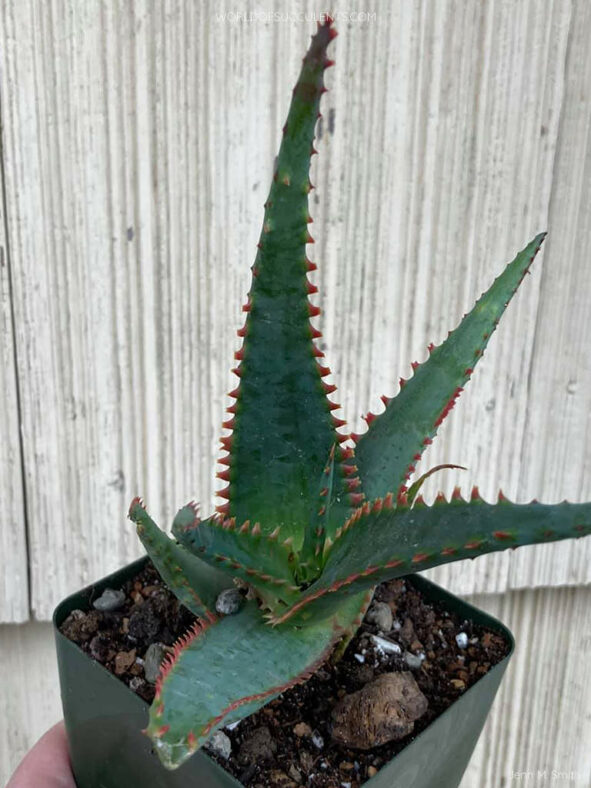Aloe 'Swordfish' is a star of the Star Aloe® collection developed by Altman Plants.
Scientific Name
Aloe 'Swordfish'
Scientific Classification
Family: Asphodelaceae
Subfamily: Asphodeloideae
Genus: Aloe
Origin
Aloe 'Swordfish' is a hybrid created by Renee O'Connell from a crossing made in January 2014 at a commercial greenhouse in Vista, California, United States. It was selected by the inventor in 2015 and patented (PP32010) by Altman Plants in 2020.
Description
Aloe 'Swordfish' is a striking succulent that forms open star-shaped rosettes of colorful leaves with lavender, blue, purple, and burgundy tones. The rosettes can grow up to 2 feet (60 cm) in diameter and produce offsets, forming a clump over time. The leaves are lance-shaped, slightly deltoid, with scalloped red leaf edges, measuring up to 12 inches (30 cm) long and 2.4 inches (6 cm) wide.
The red flowers are about 1 inch (2.5 cm) long and appear in racemes on branched panicles all year round.

How to Grow and Care for Aloe 'Swordfish'
Light: When growing Aloe 'Swordfish' indoors, place it in a window with plenty of bright indirect light. Rotate the pot once or twice a week to ensure all sides of the plant receive equal lighting. Outdoors, the plant prefers light shade, especially during the hottest parts of the day.
Soil: Great drainage is essential for growing this plant because too much moisture for an extended period can cause root rot. Use commercial soil for succulents, or make your own well-draining mix.
Temperature: When temperatures shift below 50 °F (10 °C), it is time to bring this plant inside. It tolerates heat fairly well but will not survive a hard frost. Aloe 'Swordfish' grows best in USDA Plant Hardiness Zones 10a to 11b, with average minimum winter temperatures ranging from 30 to 50 °F (-1.1 to 10 °C).
Watering: This plant needs regular watering but can tolerate drought conditions for short periods. Water deeply, but only when the soil is completely dry to the touch, and do not let water stand in the rosettes. Cut back on watering during the winter months.
Fertilizing: Although it generally does not require fertilizer, this plant will benefit from extra nutrients. Use a water-soluble fertilizer diluted to half the recommended strength.
Repotting: Repot only as needed during spring. Pick a container that is one size larger and has drainage holes.
Propagation: To propagate Aloe 'Swordfish', remove the offsets from a mature plant from late spring to early summer.
Learn more at How to Grow and Care for Aloe.
Toxicity of Aloe 'Swordfish'
Aloe 'Swordfish' is not listed as toxic for people and pets.
Links
- Back to genus Aloe
- Succupedia: Browse succulents by Scientific Name, Common Name, Genus, Family, USDA Hardiness Zone, Origin, or cacti by Genus
Photo Gallery
Click on a photo to see a larger version.


